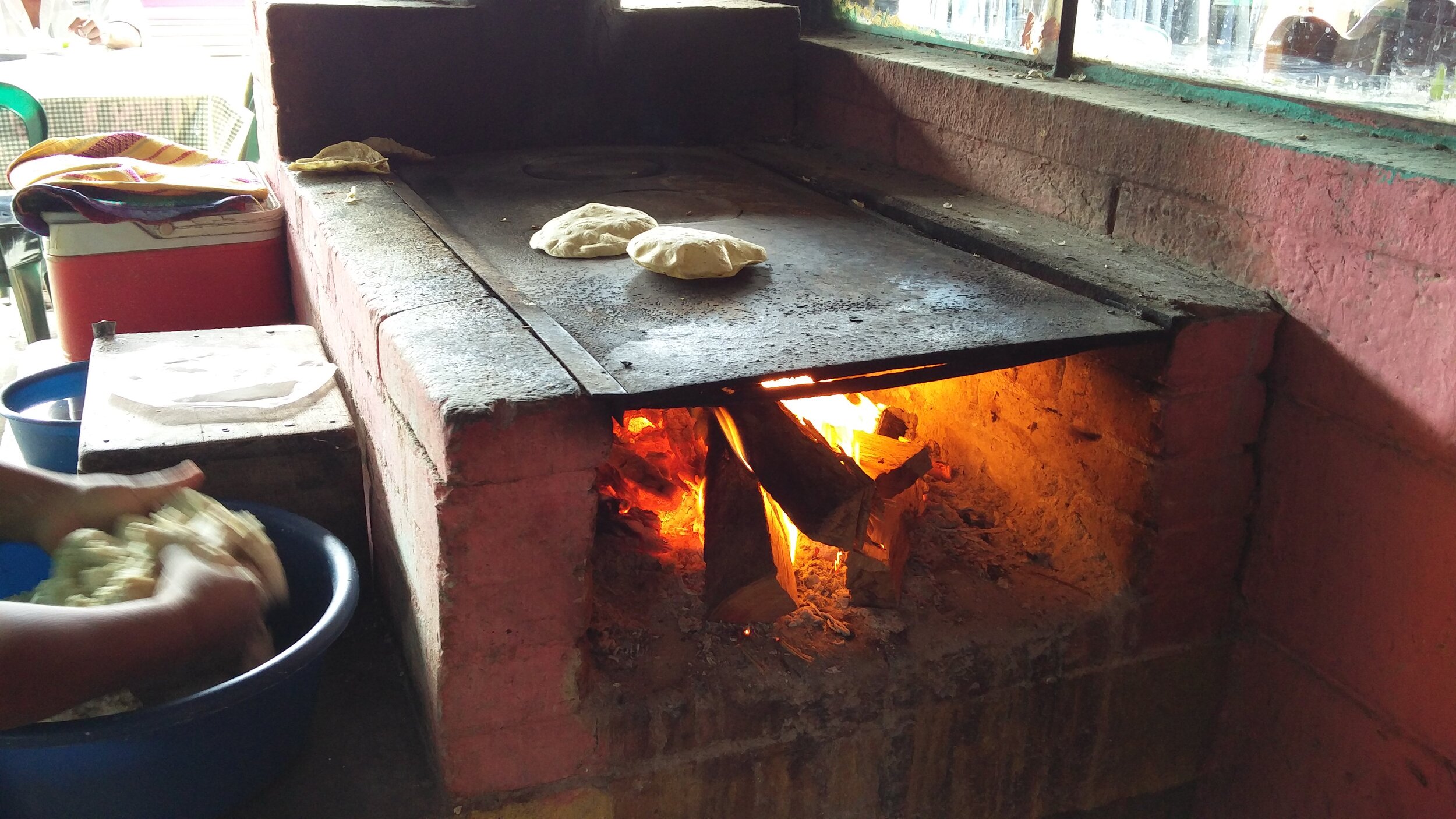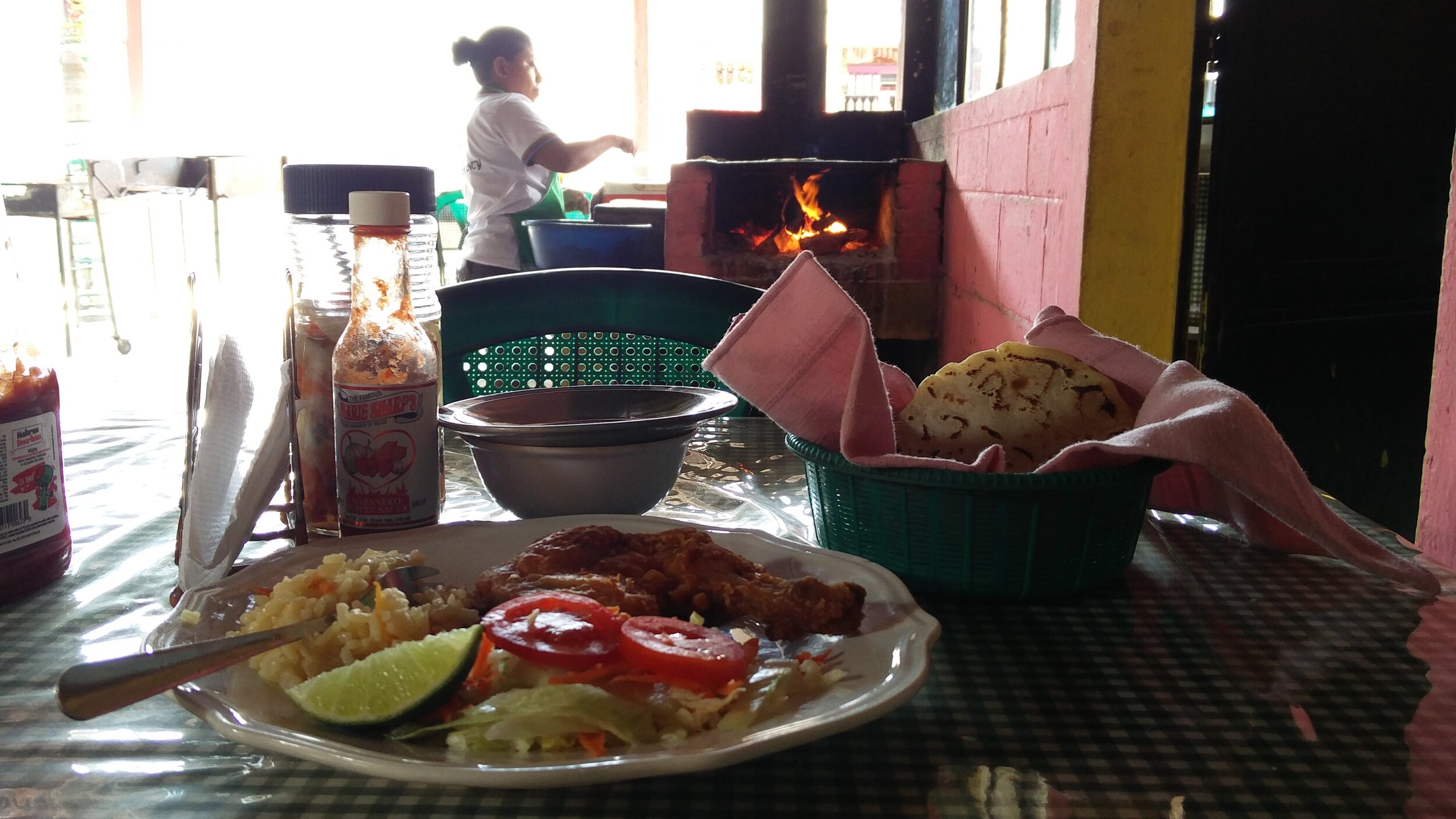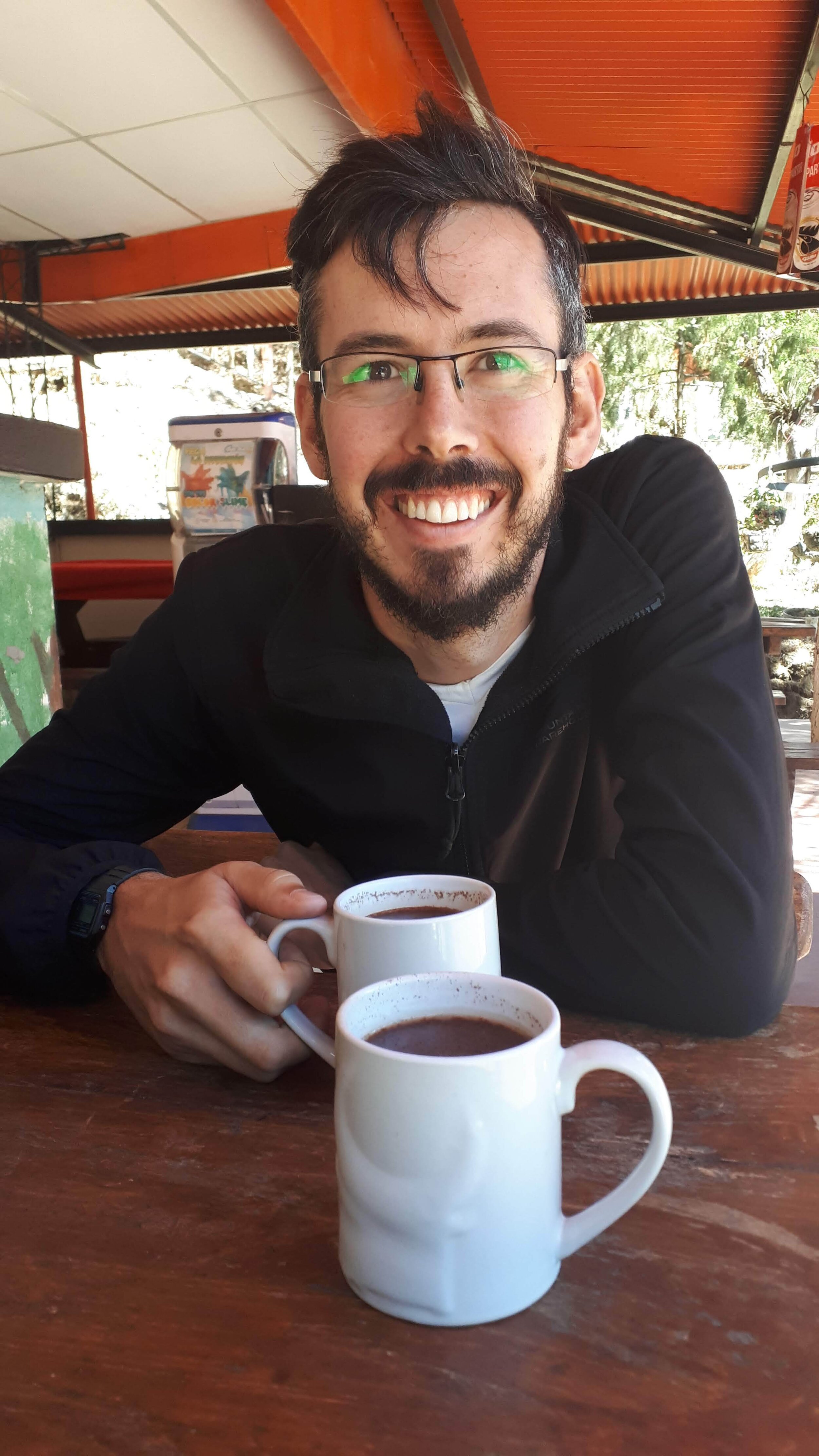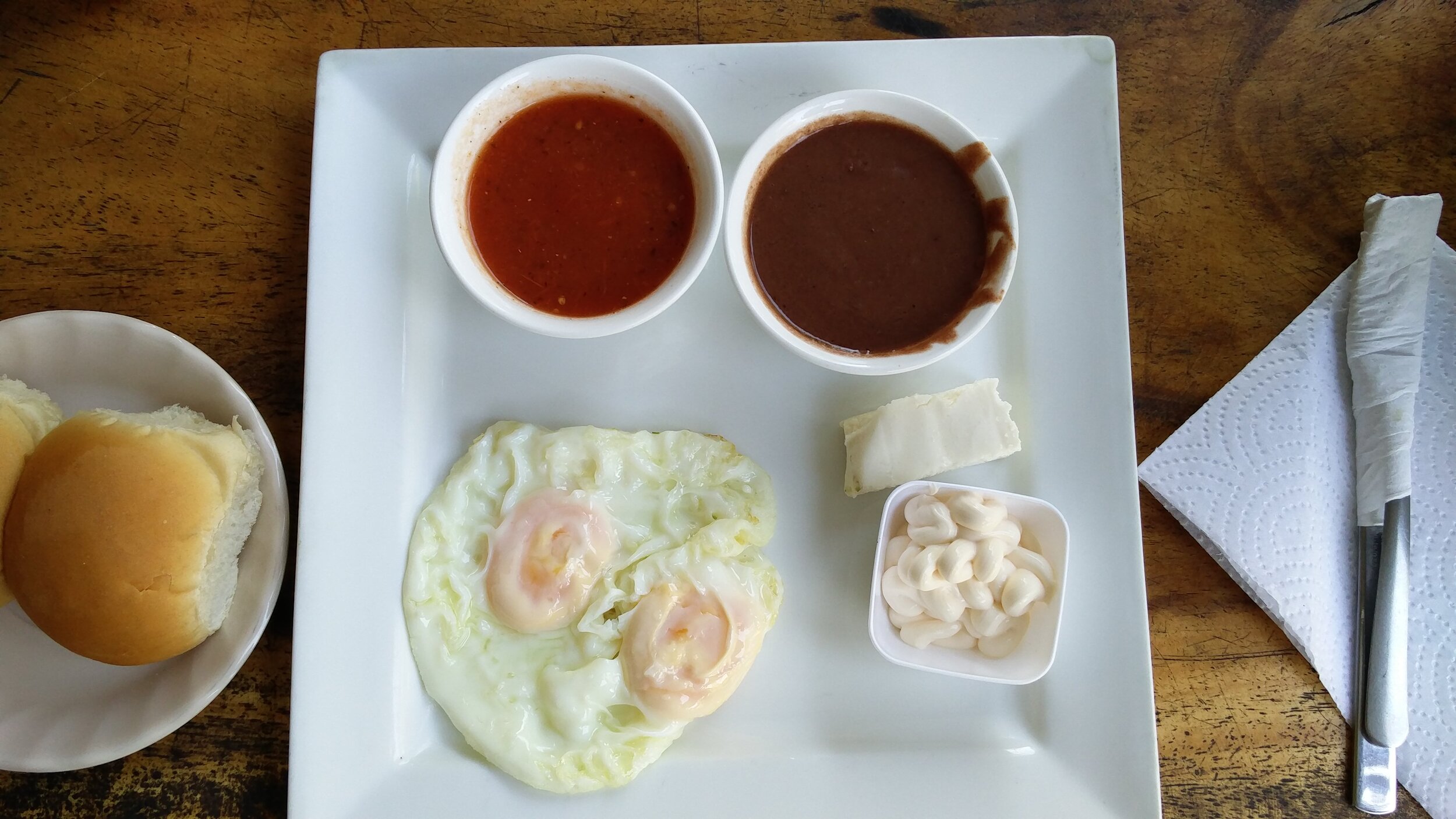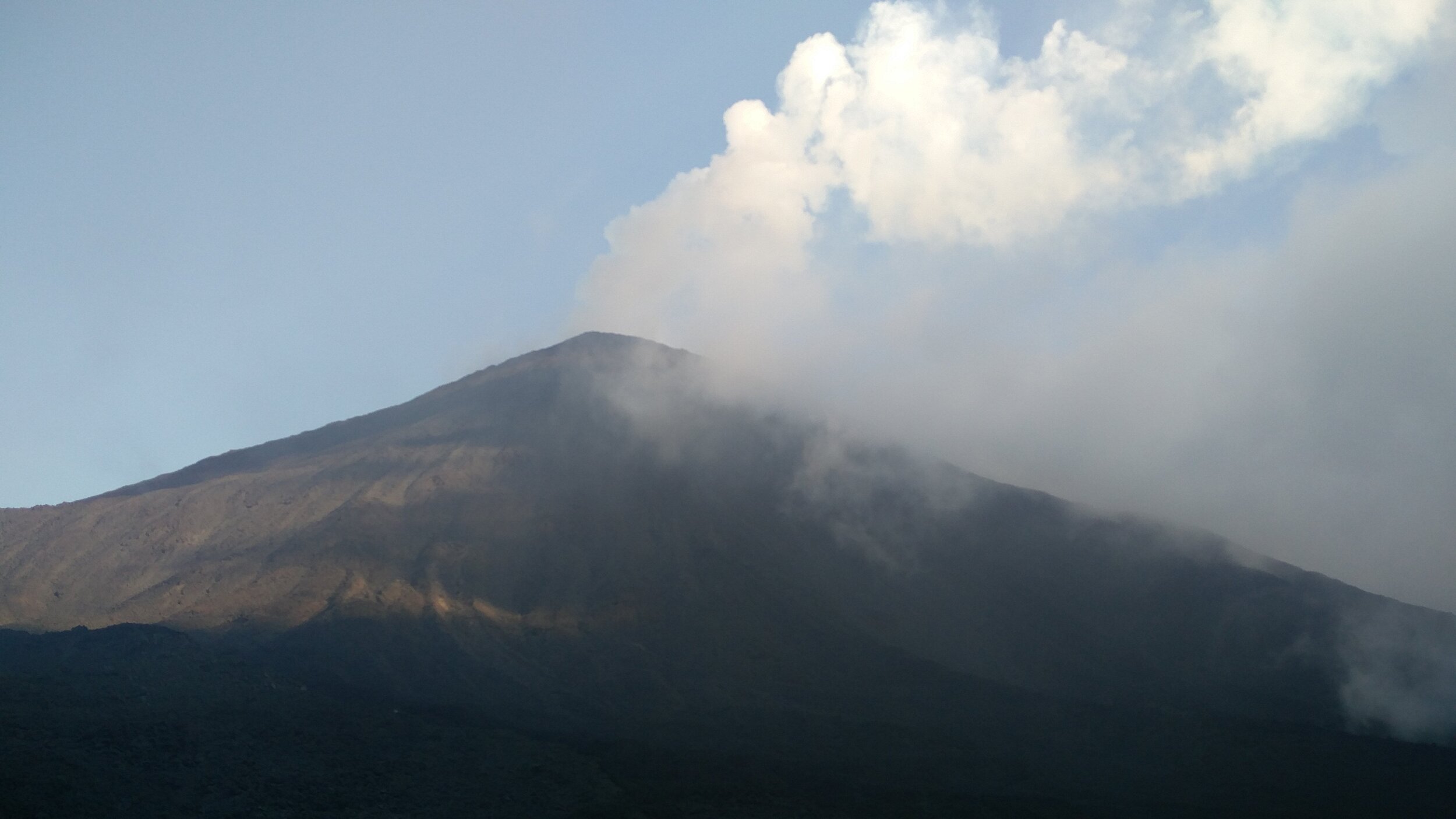El Salvador and Guatemala

Compared with the huge countries we traversed in South America, Central American countries felt rather small (despite the slow speed and age of the buses, minibuses and pick-up trucks we used to get around). We spent less time in each country and noticed more a cultural similarities (and differences) between them. Little by little the culinary landscape changed from place to place rather than from country to country.
The meals we had in El Salvador and Guatemala were some of the most memorable and I’m still working to recreate them at home.
Tortillas
We’ve all heard of tortillas at this stage with the ubiquitous floury wraps available the world over. Before I travelled to South America, however, I hadn’t much experience of the original corn tortilla. When we began our Central American journey in Panama the tortillas were very thick and gradually the further north we moved the thinner they became until we reached southern Mexico where they were more akin to what we were used to. Despite these minute differences in thickness and corn varieties the production process is more or less the same throughout. The corn is put through a process we call nixtamilisation. This process breaks down the structure of the corn kernel and allow the skin to be easily removed, making it easy to grind the corn itself. This nixtamilisation also enhances the nutritional value of the corn. It’s ground to a paste and then flattened into disks before being baked on a, dry red hot surface.
I also didn’t realise just how central tortillas are to the Central American diet. You get them with every meal. Breakfast, lunch, dinner; you’ll be given a little basket with a stack of freshly baked warm tortillas wrapped up in a little multicoloured napkin. They could be eating a sunday roast and still they’d have it with tortillas. That is no exageration. I love it!
Pupusas
Have you heard of pupusas? They’re a sort of stuffed tortilla served all over El Salvador. In the centre, they’re normally filled with puréed beans, cheese, chorizo, chicharrón (crackling) and other tasty treats. They come to the table scorching hot and you can dress them up with the pickled slaw (curtido) and other nice sauces as you see fit.
Because El Salvador is a very poor country, it was in little huts at the side of the road that we mostly had these gems. It was that experience, however, sat side by side with the locals, kids legging it about, and the food being prepared fresh right in front of you and cooked on a wood fired hot plate that made these so special. They are one of the foods I enjoyed most on my whole trip. I’m deperately trying to recreate them at home ever since!
Chocobanano
For anyone who ever watched Arrested Development, you’ll know what chocobananos are. It’s a frozen banana covered in chocolate. Simple yes, but also a great snack to eat in a place where those ingredients actually grow. It was a nice dairy alternative instead of ice cream when the sun was beating down. “There’s always money in the banana stand.”
The Food Market in Juayua
Juayua was our main food destination in El Salvador. The food market held there every weekend is famous. The stand holders come from all the nearby regions and serve up huge, heaving plates of delicious local food.
One plate was easily enough to feed two of us. They were overflowing with fried potatoes, prawns, beef, sausages, peppers, avocado, corn, salads, chicken and a lot more besides, all cooked on the same hot plate and dressed with the same herb oil. Cross contamination at its very best!
Hot Chocolate on the Volcano
I loved hot chocolate as a child. When I first started venturing into the big city of Cork I used mochas as a gateway to harder stuff like coffee. My need for the sweetener vanished rapidly, however, and I rarely adulterate my espresso these days, aside from stretching it with a little hot water from time to time to stop my heart from exploding! Having said all that, from time to time, when given the opportunity to have a really good hot chocolate (like the ones made by O’Conaill in Cork) I’ll go for it. Seeing as we were in the countries where the famous cacao originated I dabbled a few times, tasting all of the different ways it’s made.
I’m not sure whether it was because of an energy slump or the slight chill because of the altitude half way up Santa Ana Volcano but when the slightly curt elderly lady brought me this cup of what looked like curdled hot chocolate (despite my asking for coffee) there was something special about it. There wasn’t any milk in it. It didn’t taste like it had a whole pile of sugar either. The natural oils from the cocoa beans created a sort of rolling storm which swirled across the surface of the liquid in my mug. It tasted pretty special.
Dobladas
It was on the shores of Lago de Atitlán, in the little village of San Pedro La Laguna, that I was lucky enough to try these lovely little snacks. One evening as we were walking down the steep narrow streets in the town we happened across a lady and the little fold out able in front of her was covered with tasty adornments. Mirepoix, pickled beetroot, guacamole, sliced onions, salsa, refried beans and lots more. These were all toppings to go with the dobladas, folded fried tortillas filled with cheese. Very tasty and very cheap!
Pepián de Pollo
In a little restaurant across from the church in Antigua I tried this dish. In at the back in what seemed more like the family’s sitting room than a restaurant dining room we ate with only a quiet parrot in a cga eofr company.
Pepián de Pollo is often described as Guatemala’s national dish. Basically it’s a sort of spicy chicken stew. Lots of nice ingredients like tomatoes, onions, chillies and garlic are roasted and mixed to make a smooth sauce. Chicken wings and legs are then boiled in stock and covered with the delicious sauce. It’s normally served with rice and, of course, tortillas. I really liked it.
Salvadoran Breakfast
Another element of the diet in these amazing countries that we really liked was the traditional breakfast. In some ways they’re quite like our own. They have eggs, beans, sometimes sausages, but the beans are refried beans not baked, the sausages have a little bit more of a kick and they also have fried plantain, cream cheese, queso blanco and, of course, tortillas!
It helped that we also got to choose between coffee and hot chocolate to drink along side them. I’ve been making these breakfasts at home since I got back. Totally obsessed!
Marshmallows on the Volcano
I’m not quite sure you could count this last one amongst the truly local, indigenous food experiences in the region but it sure was fun. After a short walk up an active volcano near Antigua we were handed stick and marshmallows and actually toasted them on the heat of the hot lava!
The unfortunate guide looked rather stressed as it was obvious the heat of the volcano was gradually ebbing away each day and that these tours would soon come to an end but we just about managed to toast our marshmallows and it really was a special experience.
